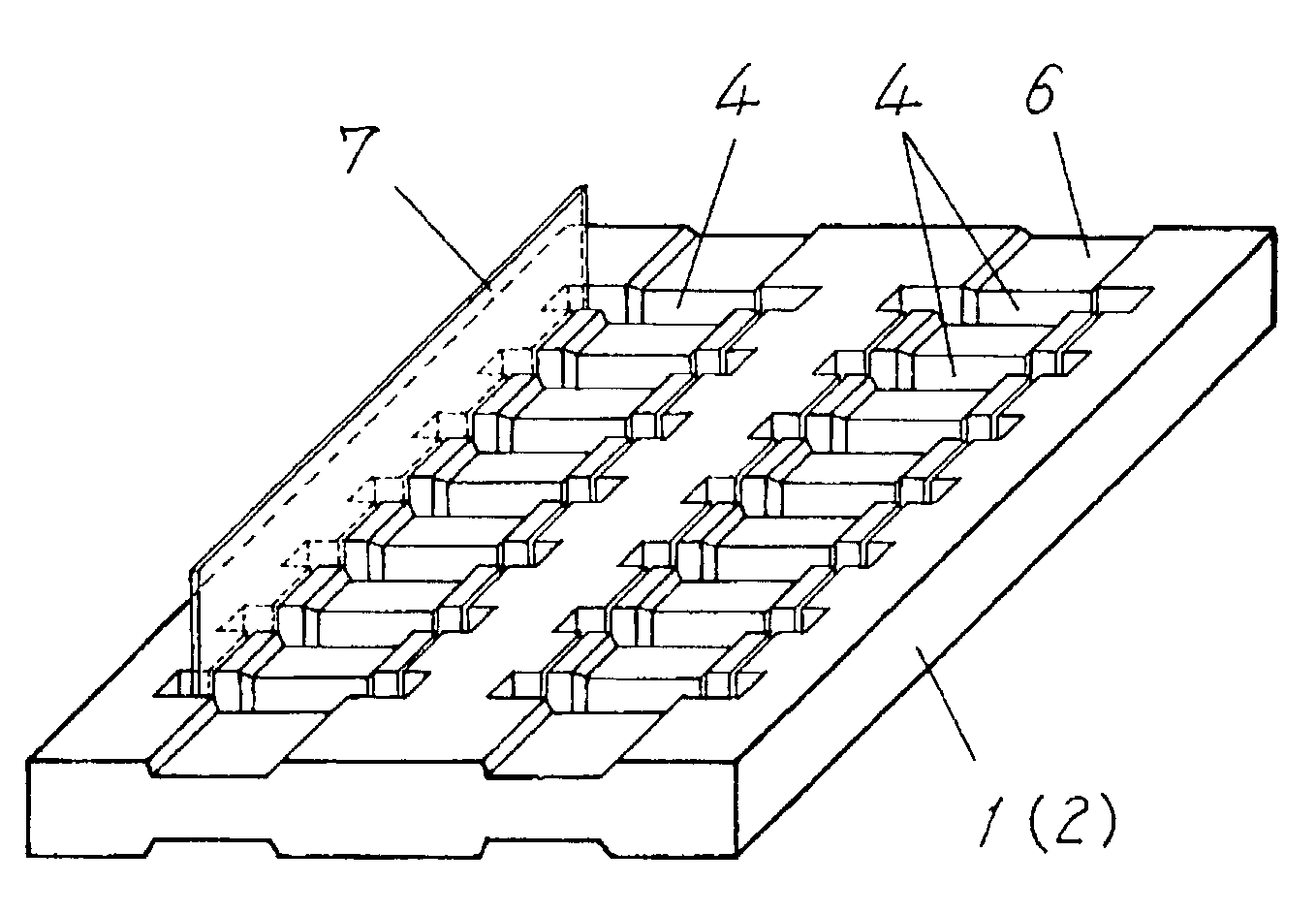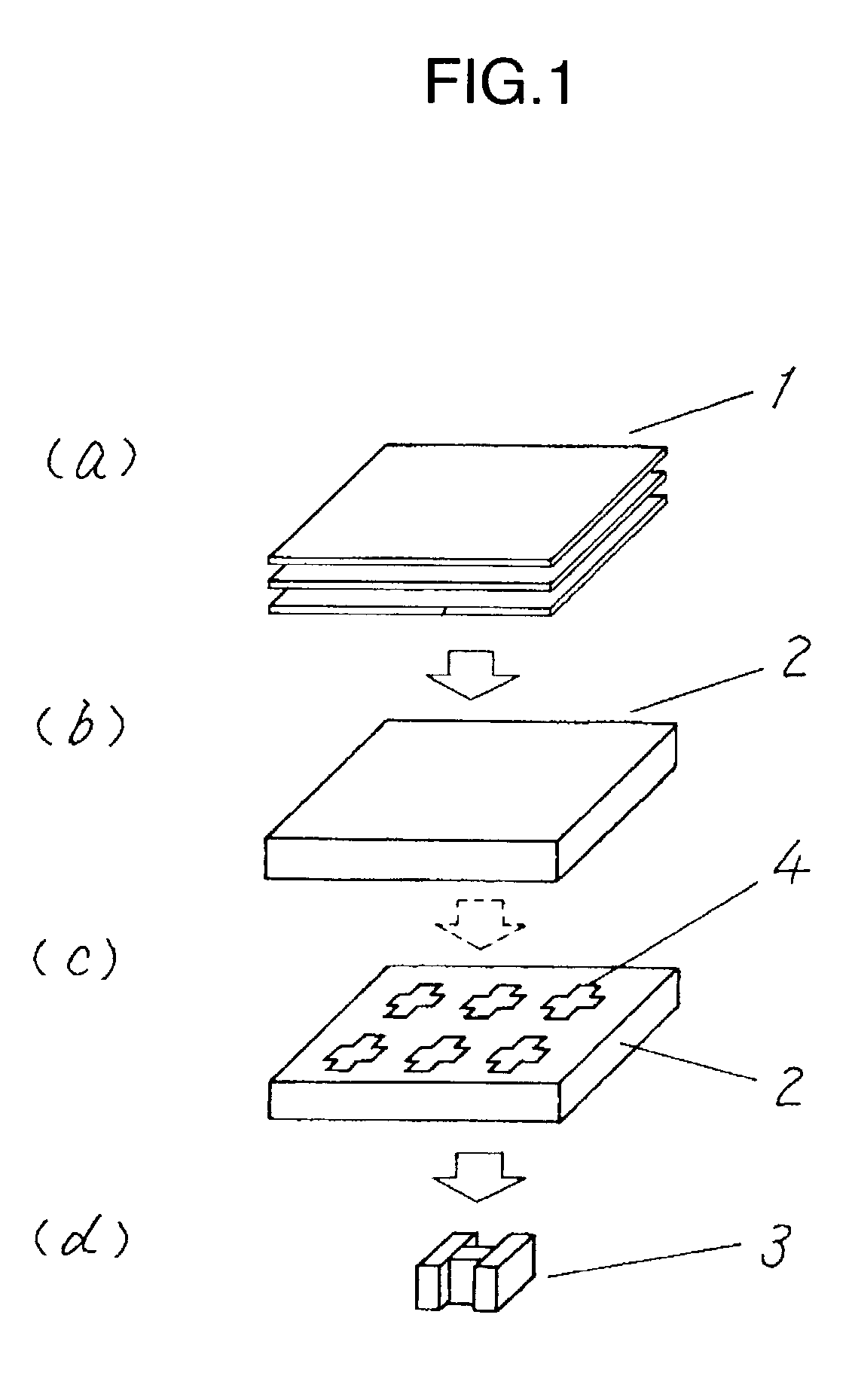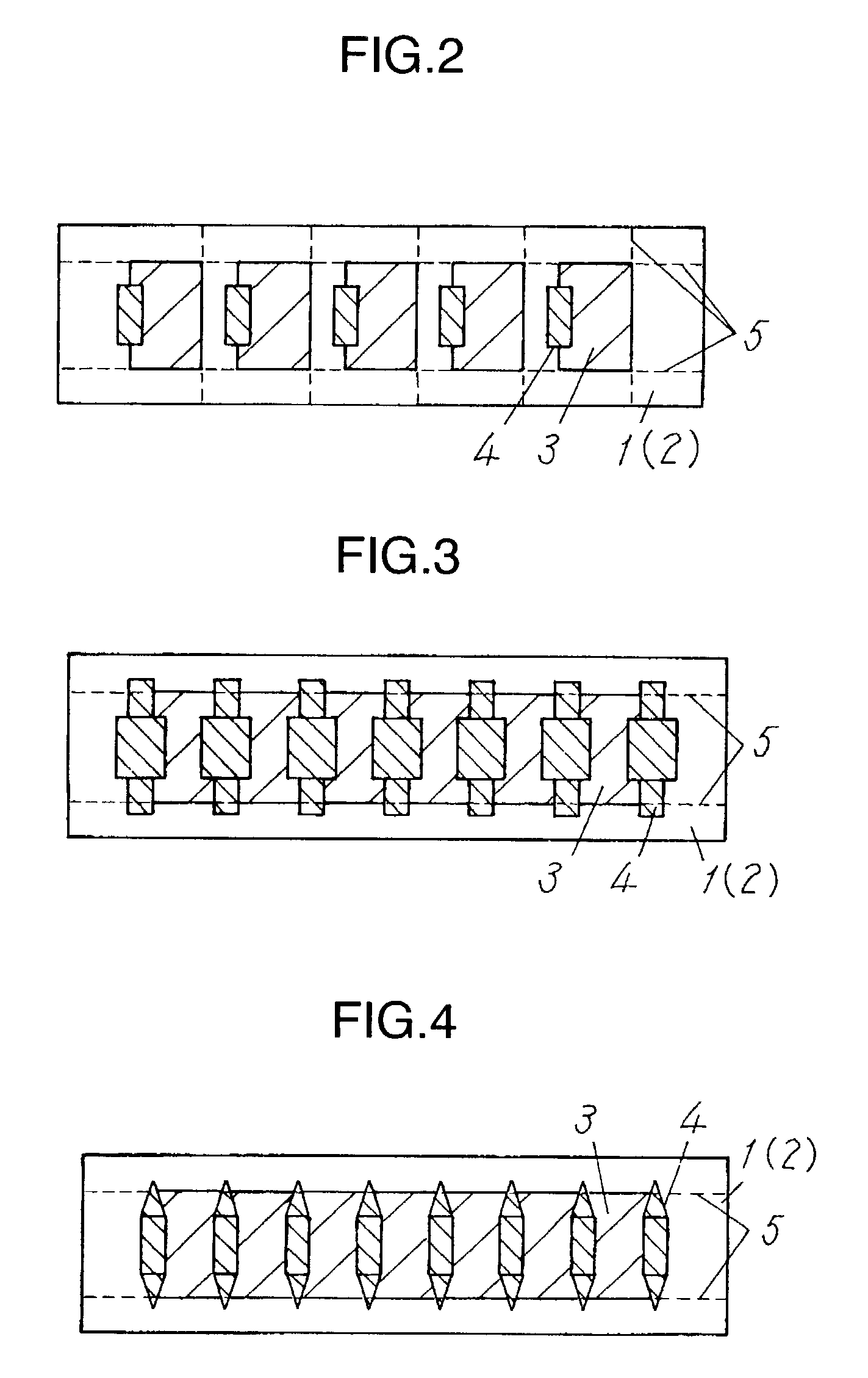Method of manufacturing ceramic material body
a technology of ceramic materials and body parts, applied in the direction of manufacturing tools, transformers/inductances magnetic cores, buttons, etc., can solve the problems of pin or mold breakdown, incorrect height, and inability to press properly, so as to reduce the cost, uneven filling and the effect of minimizing the non-uniform density
- Summary
- Abstract
- Description
- Claims
- Application Information
AI Technical Summary
Benefits of technology
Problems solved by technology
Method used
Image
Examples
example 1
[0065]Alumina slurry was prepared by mixing and dispersing 96 g of alumina powder, 2 g of copper oxide, and 2 g of titanium oxide with eight grams of butyral resin, 4 g of butyl benzyl phthalate, 24 g of methyl ethyl keton, and 24 g of butyl acetate using a pot mill.
[0066]An alumina green sheet (ceramic green sheet) 0.2 mm in thickness (after being dried) was formed from the slurry using a coater. The alumina green sheet was formed on PET film.
[0067]The alumina green sheet was cut into pieces, each measuring 11 cm long and 4.5 cm wide. Three pieces of the green sheet were laminated, and then punched and molded, using a mold, at the same time to form a punched molded sheet as shown in FIG. 10(a). The sectional shape of a punching pin has a cross shape. The number of pins used in the mold was 648. The mold was structured to have 8 rows of 81 pins.
[0068]Because each of the upper and lower faces of the mold had 8 rows of projections, recesses 6 as shown in FIG. 10(a) were formed in lami...
example 2
[0071]The mold used in this example was similar to that of Example 1, except that the upper and lower faces of the mold were formed of flat surfaces. Ceramic bodies 3 were formed in a manner similar to that of Example 1, using this mold.
[0072]In the ceramic bodies (alumina bodies) produced by the method of the present invention, any defect, e.g. chip, crack, warp and insufficient filling, was not observed.
example 3
[0073]100 g of Ni—Zn—Cu ferrite powder was mixed with eight grams of butyral resin, 4 g of butyl benzyl phthalate, 24 g of methyl ethyl keton, and 24 g of butyl acetate and kneaded using a pot mill to prepare ferrite slurry.
[0074]A ferrite green sheet 0.2 mm in thickness (after being dried) was formed from this slurry, using a coater. The ferrite green sheet was formed on PET film.
[0075]Ceramic bodies made of ferrite were formed using this ferrite green sheet, in the manner as in Example 1. The ceramic bodies were sintered under the condition that a sintering temperature of 900° C. was maintained for two hours.
[0076]In the ceramic bodies 3 (ferrite elements) produced by the method of the present invention, any defect, e.g. chip, crack, warp and insufficient filling, was not observed.
PUM
| Property | Measurement | Unit |
|---|---|---|
| diameters | aaaaa | aaaaa |
| thickness | aaaaa | aaaaa |
| molding pressure | aaaaa | aaaaa |
Abstract
Description
Claims
Application Information
 Login to View More
Login to View More - R&D
- Intellectual Property
- Life Sciences
- Materials
- Tech Scout
- Unparalleled Data Quality
- Higher Quality Content
- 60% Fewer Hallucinations
Browse by: Latest US Patents, China's latest patents, Technical Efficacy Thesaurus, Application Domain, Technology Topic, Popular Technical Reports.
© 2025 PatSnap. All rights reserved.Legal|Privacy policy|Modern Slavery Act Transparency Statement|Sitemap|About US| Contact US: help@patsnap.com



